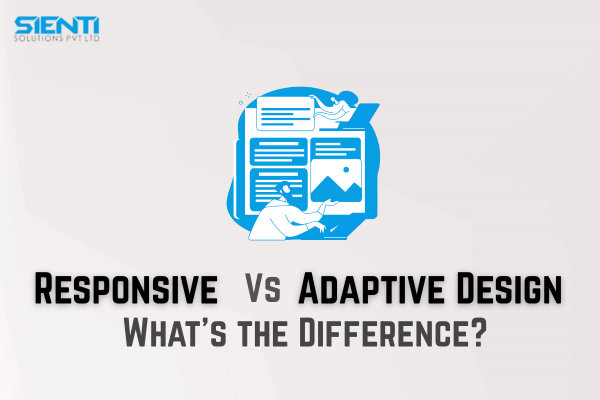Responsive vs Adaptive Design: What’s the Difference?August 26 ,2025

When it comes to web design, one of the most common questions beginners ask is: What’s the difference between responsive and adaptive design? Both approaches aim to make websites look good on different devices, but they work in slightly different ways. Let’s break it down in simple terms.
What is Responsive Design?
Responsive design is all about flexibility. A responsive website automatically adjusts its layout depending on the size of the screen.
- If you open the same website on a desktop, tablet, or smartphone, the design will shift and resize smoothly.
- It uses fluid grids and flexible images that scale according to screen size.
- Popular websites like blogs, e-commerce stores, and news portals often use responsive design because it ensures a seamless user experience across devices.
Example: A product image on a desktop might appear large with details on the side, but on a mobile screen, the same image will shrink, and details will move below it.
What is Adaptive Design?
Adaptive design, on the other hand, focuses on specific screen sizes.
- Instead of one flexible layout, designers create multiple fixed layouts for different devices (like one for mobile, one for tablet, one for desktop).
- The website detects the user's device and shows the version designed for that screen size.
- It's like having different versions of the same website for different devices.
Example: An airline website may show a simplified booking interface on mobile but a more detailed version with extra options on desktop.
Key Differences Between Responsive and Adaptive Design
| Feature | Responsive Design | Adaptive Design |
|---|---|---|
| Layout | Flexible and fluid | Fixed layouts for specific devices |
| User Experience | Smooth transitions across all screen sizes | Optimized experience for chosen screen sizes |
| Development | Easier to maintain once built | Requires more design effort for multiple layouts |
| Best For | Blogs, e-commerce, portfolios, general websites | Apps, specialized websites, or where user behavior differs by device |
Which One Should You Choose?
For most beginners and businesses, responsive design is the go-to choice. It’s easier to manage, cost-effective, and works across almost every device. Adaptive design is great if you want highly tailored experiences, but it usually requires more resources.
Conclusion
Both responsive and adaptive designs aim to improve the user experience, but they take different approaches. Responsive design adapts fluidly, while adaptive design switches between fixed layouts. For most websites today, responsive design is the preferred option because of its flexibility and ease of use.
If you’re planning to build a website and want expert guidance, choosing the Best web designing company in Kochi can help you create a design that fits your business needs perfectly.


_(1)1.jpg)